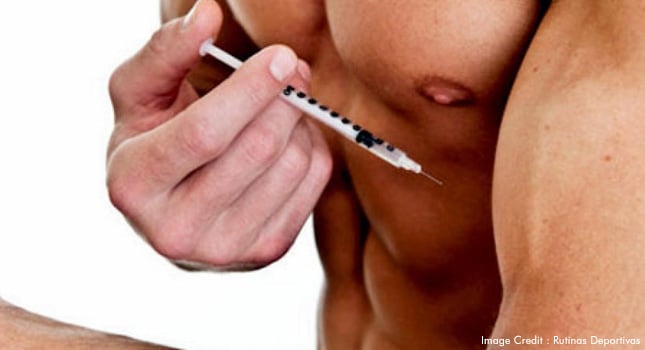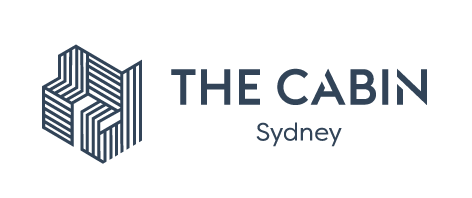Illegal steroids have been found in half of the drug seizures by Queensland police in recent months. Bikie gangs selling these drugs are targeting young men with bigorexia: the condition that causes an obsession with a muscular physique.

Bikie Gangs in Australia have been caught with large amounts of human growth hormone and anabolic steroids. Police believe that the internet has facilitated buying these drugs and fuelling the target market: young men who are suffering with muscle dysmorphia, also known as bigorexia.
The human growth hormone (HGH) is the most popular substance for those who have taken their desire to be physically fit to the extreme. The growth hormone is one that occurs naturally in the body, produced by the pituitary gland. Naturally occurring HGH facilitates the development from child to young adult. The Therapeutic Goods Administration approves synthetic human growth hormone for some specific and rare medical conditions that have to do with underdevelopment. However, presently, the most common use of it as an anti-aging and muscle-building substance is not approved; nor is it effective or safe.
There is a long list of possible side effects of HGH. Some of the negative side effects include pain in the muscles, joints and nerves, fluid in the body’s tissue (edema), high cholesterol, Carpal Tunnel Syndrome and increased risk of diabetes and cancerous tumours. Like taking any illegal substance, the danger from using HGH without a prescription is that you have no way of knowing what you are actually taking. Often times HGH is sold illegally containing other, cheaper and potentially harmful substances.
The other main substance of choice for a performance enhancer is steroids. These are anabolic steroids used by athletes or body builders which contain a synthetic version of testosterone. Adding more testosterone to the body is thought to increase muscle mass and enhance athletic ability. However, consuming more testosterone than the body naturally produces has a range of negative effects on health. Both men and women can incur side effects that are harmful to fertility and the sex organs. In addition, people who take steroids are at an increased risk for heart attacks, liver disease, cancer of the liver and enlarged heart. They may also experience extreme rage or suffer from delusions.
How Bigorexia Fuels the Muscle-Building Drug Industry
One study by BBC estimates that one in 10 men at the gym suffer from muscle dysmorphia. The chair of the Body Dysmorphic Disorder Foundation, Rob Wilson, says that young men are under more pressure than ever to be muscular. This pressure is exacerbated by their overexposure to perfect body imagery in the media.
This makes young men the perfect target for people peddling illegal performance enhancers. Says Bond University criminologist and former police detective Dr Terry Goldsworthy, “I think there’s a whole body image culture, especially if you look round the Gold Coast… So you have a lot of people looking to improve their looks, to get fitter, and [steroids] can provide an easy way to achieve those goals that would otherwise be difficult to achieve.”
Illegal steroids and growth hormones have accounted for over half of the arrests in Queensland in recent months. A statewide crackdown turned up large quantities of HGH and 200 vials of steroids, and led to the arrests of seven people associated with the Lone Wolves motorcycle club.
Steroid use has increased twofold since 2007, surpassing increases in rates of ice use.
What Drives Young Men to Doping
Clearly there are a number of serious risks in taking performance-enhancing substances. The cost seems rather high for as trivial a reward as being extra muscular. But the problem lays in the fact that the people who get hooked on performance-enhancing drugs see being muscled as far from trivial. To these bodybuilders, having the perfect physique is by far the most important aspect of their life. These people are often struggling with muscle dysmorphia or bigorexia.
Young men comprise the majority of bigorexics. Youth is when most addictions and mental health concerns begin. This time in our lives is often filled with insecurity, and young men who are seeking acceptance and value in society try and find it through their appearance. For men, the most significant way in which they are judged is their muscularity.
Like anorexia or body dysmorphic disorder, bigorexia is an anxiety disorder where one has a much skewed image of oneself. Those with muscle dysmorphia see themselves as small and weak despite their bulky muscles. In addition to obsessive thought patterns, they develop compulsive behaviour such as excessively going to the gym, frequently checking their weight and looking in the mirror for long periods of time. The disorder often ends up going hand in hand with addiction to the performance enhancing drugs previously discussed.
Becoming Addicted to Performance-Enhancing Drugs
Developing a dependence on HGH or anabolic steroids is not uncommon. For those who are caught in the trap of trying to obtain the perfect physical appearance, addiction to these substances is practically inevitable.
Addiction is evidenced in the fact that when negative side effects present themselves, individuals continue to inject the substance. In one case, a young man from the UK, Oli Loyne, suffered two steroid-induced heart attacks by 19 years old and continued take the substances until a third heart attack took his life.
There are also withdrawal symptoms for both HGH and steroids, such as extreme fatigue and depression.
The withdrawal symptoms of steroids are extensive. It is not safe to stop steroid use abruptly, and just as with many addictive substances, the body becomes dependent and must be weaned off it. Some of the symptoms of withdrawing from anabolic steroids are weakness, nausea, vomiting, diarrhea, decreased appetite. Those who are addicted to substances like HGH and steroids are drawn in by an obsession with the perfect physique. In other words, this is a common example in which mental illness fuels substance addiction.
Treatment for Steroid Addiction
Steroid and HGH use is not just common amongst muscle-obsessed individuals at the gym. HGH in particular has become increasingly popular among people in the entertainment industry. As the world’s obsession with physical appearance persists, we continue to see young men and women struggling with deep-seated insecurity in their appearance that can lead to disorders like body dysmorphia. In the case of bigorexia, men are especially at risk for these substances as their muscularity is constantly under scrutiny.
Fortunately, there is treatment for bigorexia and steroid addiction. Research says that the prognosis for weaning off steroid use is good – while long-term use can have negative effects, your body can often repair much of the damage done from taking these drugs. Addiction specialists at The Cabin Sydney that understand the complexities of addiction are equipped to assist you in creating a long-term treatment plan. If you or someone you know is struggling with an addiction, contact us today to see how we can help.
Let our team of professionals demystify the topic
call us directly on
1 800 251 994


